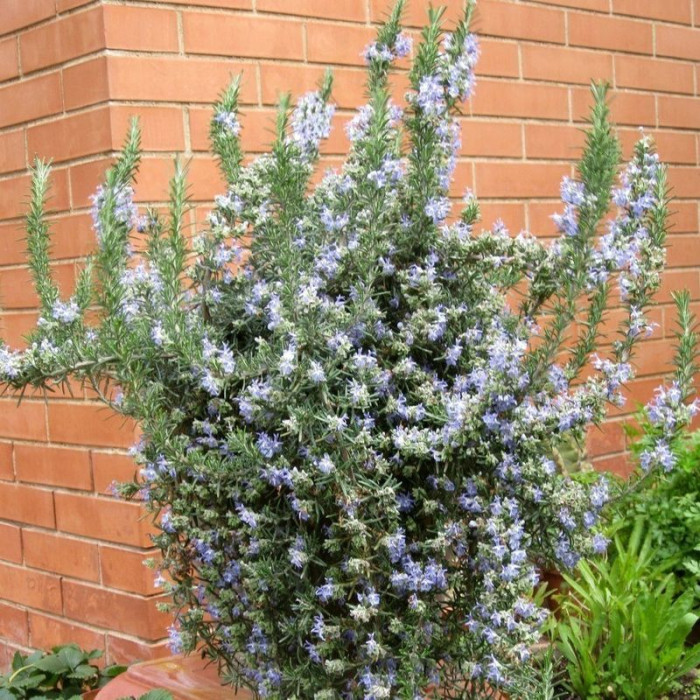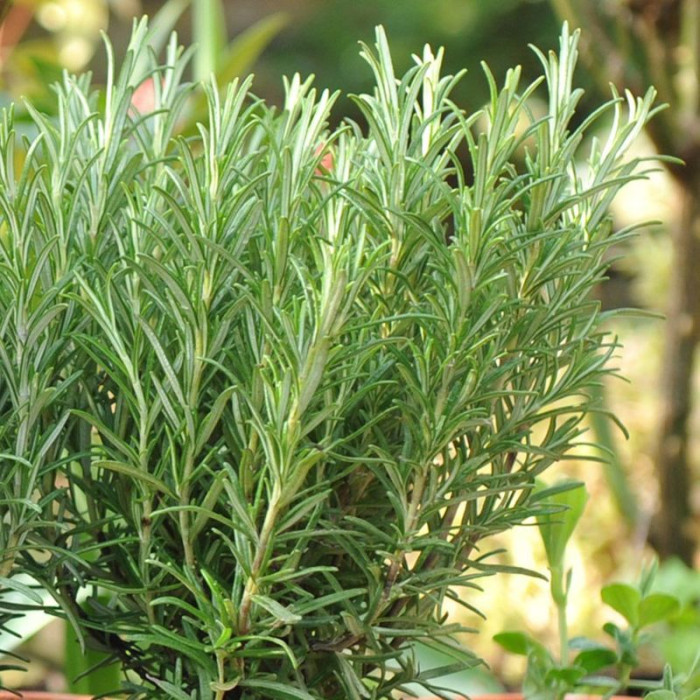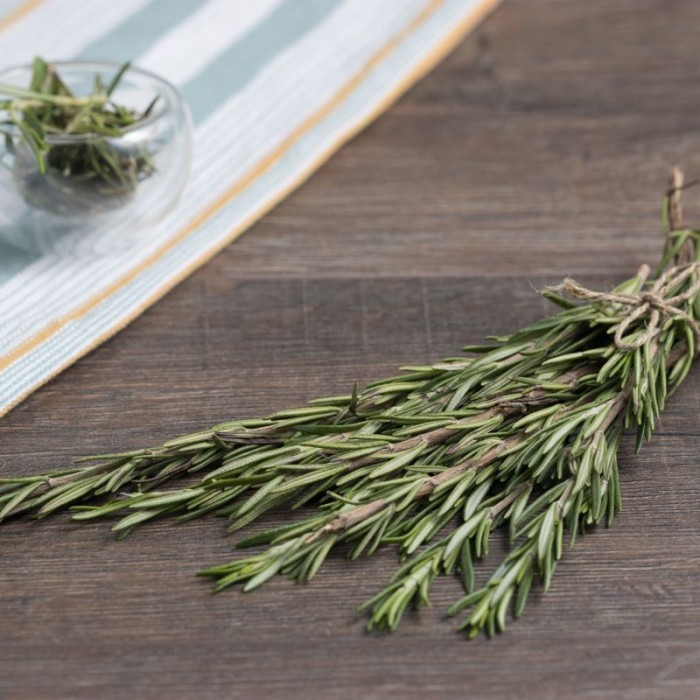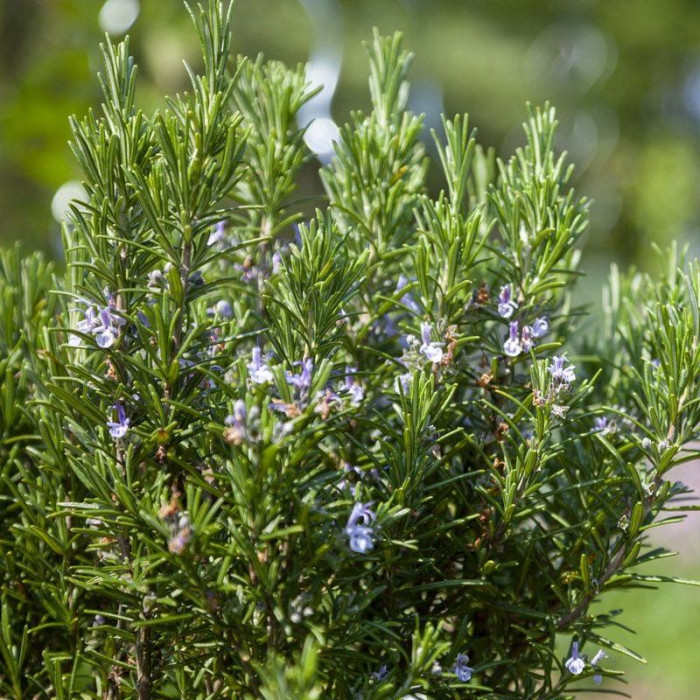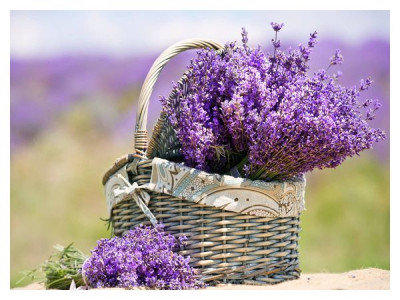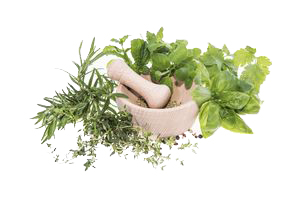Rosemary / Rosmarinus officinalis - a species of semi-shrub and shrub perennial evergreen plants of the genus Rosemary (Rosmarinus) of the Lamiaceae family.
Representatives of the species are shrubs 50–200 cm high. Young branches are obtusely four-sided, pubescent. Leaves on very short petioles, evergreen, linear, blunt at the end, wrapped around the edges, thick.
Flowers almost sessile in 5-10-flowered false racemes at the ends of short shoots; corolla blue-violet, slightly pubescent outside; the upper lip is notched, the lower one is slightly longer than the upper one, with a large, serrated middle lobe along the edges. The fruit is a rounded ovoid, smooth, brownish nut.
Blooms in April - May. The fruits ripen in September.
Alkaloids (rosemaricin), ursolic and rosmarinic acids, tannins, etc. were found in rosemary leaves. Not poisonous
The leaves, flowers and upper parts of the shoots contain essential (rosemary) oil, its yield, depending on the place of plant growth, is 0.3-1.2% (on a wet weight). The accumulation of oil in the leaves has two maxima: in the period of full flowering and in the period of fruit shedding. The composition of the essential oil includes α-pinene (30%), camphene (20%), cineol (10%), borneol, L-camphor, sesquiterpene hydrocarbon (caryophyllene), bornyl acetate, limonene, resins and bitterness.
Rosemary essential oil is used in the perfumery and cosmetics industry; leaves, flowers and young shoots - in the alcoholic beverage and baking industries.
Since the plant is very thermophilic and freezes at the slightest temperature drop, it is best to grow it in a tub in order to transfer it to a sheltered room with a temperature of at least +5 ° C in winter.
Due to its size and beautiful bark, rosemary is perfect for growing bonsai, and in all Japanese styles.
Rosemary has a strong, aromatic, sweetish and camphoric smell reminiscent of pine, and a very spicy, slightly spicy taste. Leaves, flowers and young shoots in fresh or dry form are used as a spice for processing fish, in small quantities they are added to vegetable soups and dishes, salads, minced meat, fried meat, fried poultry, mushrooms, red and white cabbage and marinades. They give a pleasant taste to soft cheeses, potatoes, game meat, fish and pastries.
The use of rosemary in food helps to increase the secretion of gastric juice, improve digestion. In clinical experiments, it has been proven that an aqueous infusion of the plant enhances heart contraction, briefly increases blood pressure, has a choleretic and tonic effect, and relieves stress and nervous tension. It was also shown the positive effect of an aqueous extract of rosemary (mixed with lavender) on patients in the post-stroke period, due to its ability to improve cerebral circulation, memory and vision.
Rosemary helps with colds: its volatile substances are able to purify the air of the room from 80% of the microbes in it. It copes well with such harmful microorganisms as staphylococcus aureus, streptococcus, E. coli, yeast fungi, as well as parasites such as giardia.
Leaves and annual shoots of rosemary were used in folk medicine inside for amenorrhea, as an astringent, tonic for impotence; sedative - for nervous disorders in menopause; analgesic - for pain in the heart and gastric colic and externally - for neuritis, thrombophlebitis, rheumatism, mumps, leucorrhea, as a wound healing. It is used in modern combined herbal preparations (for example, Kanefron H).
For the cultivation of rosemary, clean and fertile soils are selected. Seeds are sown in April in insulated soil (greenhouses, greenhouses), covering with foil. When shoots appear, the film is removed.
When grown in a seedless way, seeds are sown in open ground at the end of May. Gives the highest yield on illuminated dilyankkah.
Seeding rate: 0.03 grams / m². Seeding depth: 2.0 cm. Row spacing: 45 cm.

No questions about this product, be the first and ask your question.


